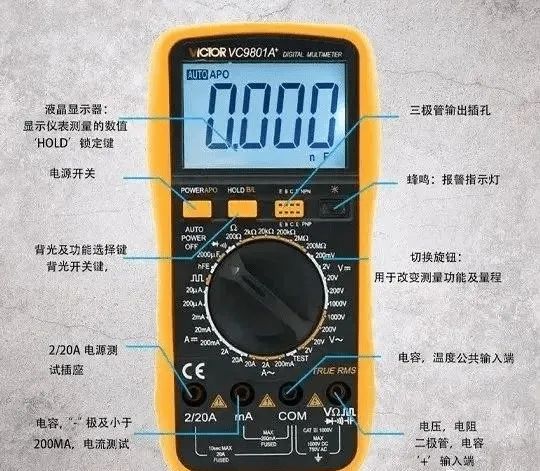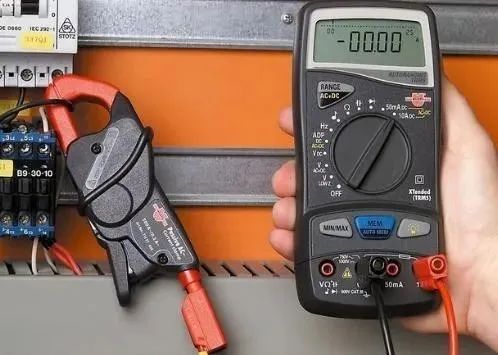
1. Check the range before measuring; do not measure without checking.
Whenever you pick up the probes to prepare for measurement, always double-check whether the measurement category and range selector switch are set correctly. For safety, this habit must be developed.
2. Do not change the range during measurement; switch to the off position after measuring:
You must not arbitrarily turn the selection knob while measuring, especially when measuring high voltage (like 220V) or large current (like 0.5A), to avoid generating an arc that could burn out the switch contacts. After measuring, the range selector switch should be turned to the “?” position.
3. The dial should be level, and the reading should be aligned.
When using a multimeter, it should be rotated horizontally, and your line of sight should be directly aligned with the needle.
4. The range should be appropriate; the needle should deflect more than half.
When selecting a range, if you cannot estimate the size of the measurement in advance, choose a larger range first, and then gradually switch to a smaller range based on the degree of deflection until the needle deflects to about two-thirds of the full scale.
5. Measure resistance without power; discharge capacitors before measuring:
It is strictly forbidden to measure resistance in a powered circuit. When checking large capacitors in electrical devices, discharge the capacitor by short-circuiting it before measurement.
6. Zero the meter before measuring resistance; adjust zero when changing ranges:
When measuring resistance, first turn the selector switch to the resistance setting, short the two probes, and adjust the “Ω” zero potentiometer until the needle points to zero ohms before measuring. Each time you change the resistance setting, you should readjust the ohm zero point.
Measuring AC Voltage:
Select the AC range, ensuring the unit matches the requirements;
Connect the probes to both ends of the circuit, ensuring the polarity is correct;
When measuring high voltage, switch sockets, and remember to turn off the power before changing settings;

Precautions for Using a Multimeter
When using an analog multimeter, ensure that the ends of the two measurement probes are connected correctly, with the red probe connected to positive (+) and the black probe to negative (-). Then confirm whether the needle is at the “0” position. The needle should align with the left end line of the scale. If not, zero adjustment is required.Before measuring current and voltage, estimate the range of the current and voltage to be measured, starting with a larger range and then adjusting to an appropriate range to avoid damaging the multimeter with excessive current.
When measuring, consider the impact of the multimeter’s internal resistance. For example, to measure voltage, connect the probes to the circuit being measured. At this time, current also flows through the internal resistance of the multimeter, which can affect the measurement value. When measuring the voltage at the same point, if different ranges are used, the internal resistance of the multimeter varies, affecting the measurement differently.
When measuring transistor circuits, it is best to select a DC range with an internal resistance of 20kΩ/V, a value usually marked on the multimeter’s scale. Additionally, transistor circuits often require measuring low voltages, such as 0.1V, so the selected multimeter should have a 1V measurement range.
Disclaimer: This article is sourced from the internet, and the copyright belongs to the original author. If there are any copyright issues, please contact us for prompt removal. Thank you!
● Enjoy! 135 wiring diagrams for electricians, enough for a day's study.
● Sudden incident at midnight, 2 dead! 18 explosions in 2 minutes! The culprit is near you!
● Interviewed an electrician yesterday, can you solve these questions? Many electricians don't know the first one!
● Electricians have four certificates; what are the differences?
● A leave request from an employee of China Railway 20th Bureau went viral online, sparking heated discussions in the engineering circle!
● No more hiding! 100 animated diagrams of PLC and sensor working principles, learn to walk sideways!
● What do the levels 1, 2, and 3 of the distribution box mean? What are their functions?
Recommended reading: What do the symbols on the multimeter mean? How to use a multimeter correctly? Click the link below to read the original article.